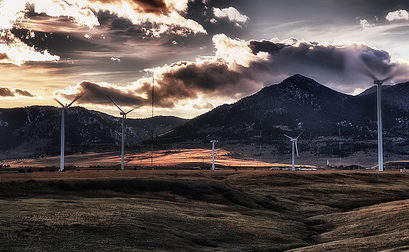
World Energy Day, first initiated in 2012 by the World Energy Forum as a time to raise awareness of energy use and promote global decarbonising efforts, falls on 22 October.
News of startlingly extreme global temperatures and weather conditions caused by climate change has led nations across the world to step up clean energy efforts, with technological innovations causing prices of solutions such as wind and solar to dip and installations to soar. However, despite renewables’ growing grasp of the energy market, the industry still faces the problem of universal energy access.
To mark World Energy Day, Power Technology looks at global energy access and the measures under way to improve it.
Read more: Is it possible to provide energy access for all and avoid climate change?
Who doesn’t have power?
Developed countries have not considered consistent and reliable electricity a luxury in for some time now. With many considering consistent electricity the norm, it is an uncomfortable fact that there remain areas with intermittent or non-existent access to electricity. However, according to The World Bank, a billion people are still living without power, while a 2017 report from the International Energy Agency (IEA) says that by 2030, 674 million people will still be without electricity. The IEA predicts that the vast majority – nearly 90% – of this number will be in sub-Saharan Africa.
Innovations in decentralised energy systems have allowed the problem of energy access to be addressed. The same IEA report states the number of people without access to electricity fell to 1.1 billion in 2016, down from 1.6 billion in 2000. For the first time, the number of people gaining access to electricity in Sub-Saharan Africa has begun to outstrip population growth, and progress in Asia has been even faster.

US Tariffs are shifting - will you react or anticipate?
Don’t let policy changes catch you off guard. Stay proactive with real-time data and expert analysis.
By GlobalDataIndia is currently leading the race, expecting to reach complete electrification by 2020, ten years earlier than the target set under the United Nations Sustainable Development Goals for universal energy access.
However, authorities need to do much more work needs if the target of universal electrification is to be reached by 2030.
Achieving universal energy access
The solution to electrifying detached communities lies in the deployment of decentralised, renewable energy networks. Mini- and off-grid systems offer communities agency over their energy consumption and independence from the main grid, while renewables are becoming increasingly inexpensive and thus more viable for smaller, developing sites.
Increased investment into these technologies is integral to currently unelectrified homes receiving affordable and reliable power. According to the IEA report, universal electrification would require an annual investment of $52bn, representing ‘more than twice the level mobilised under current and planned policies’.
“Of the additional investment, 95% needs to be directed to sub-Saharan Africa,” the report reads. “Detailed geospatial modelling suggests that decentralised systems, led by solar photovoltaic in off-grid systems and mini-grids, are the least-cost solution for three-quarters of the additional connections needed in sub-Saharan Africa.”
The World Bank is one of the organisations working to ramp up financing for energy access programmes. One such investment is a $350m electrification program in Nigeria that is expected to attract $410m in private investment and create a market for mini and off-grid energy solutions. Based on this scheme, the Nigerian Rural Electrification Agency is mapping more than 200 sites for mini-grid development.
Similarly, the corporation supports more than $1.3bn of generation, transmission, distribution and off-grid investments in Kenya. As a result, the country has more than doubled its electricity access rates from 23% in 2009 to 56% in 2016.
India provides a key example of a nation working to rapidly electrify. Last year, the Modi government pledged to electrify every home in the region by 31 December 2018, under a INR163 bn (US$2.5bn) scheme known as ‘Saubhagya Yojna’. Since then, authorities have supplied 80% of previously unconnected villages with power, using solar, energy storage batteries and LED lighting.



